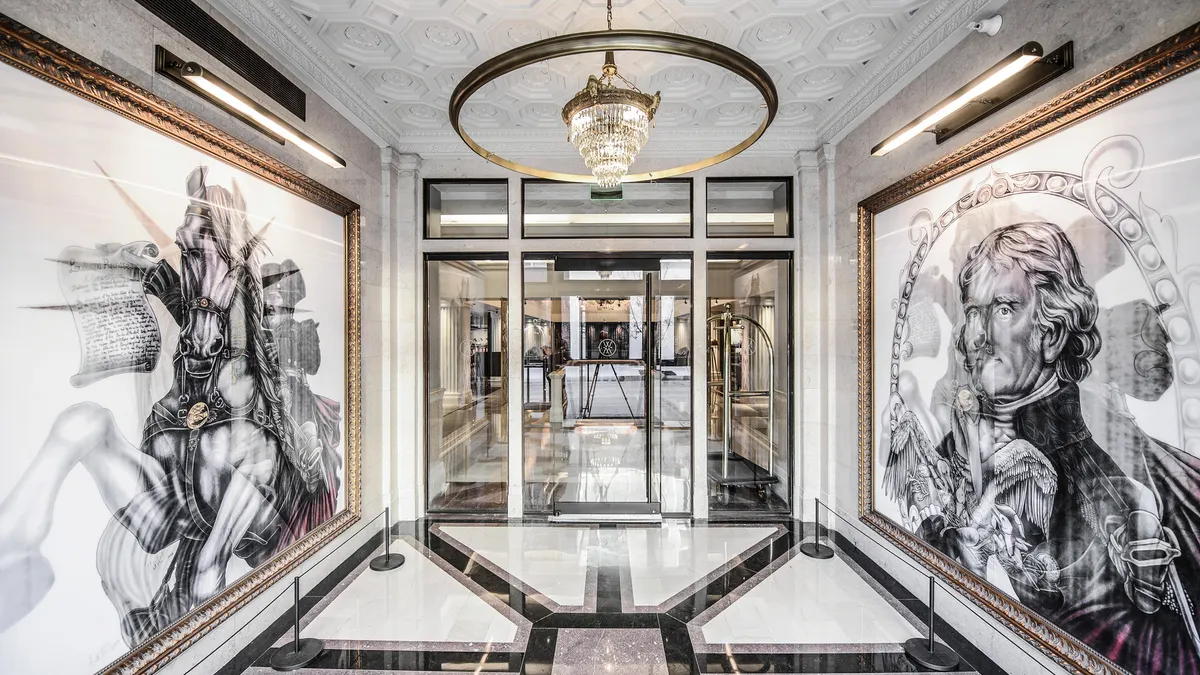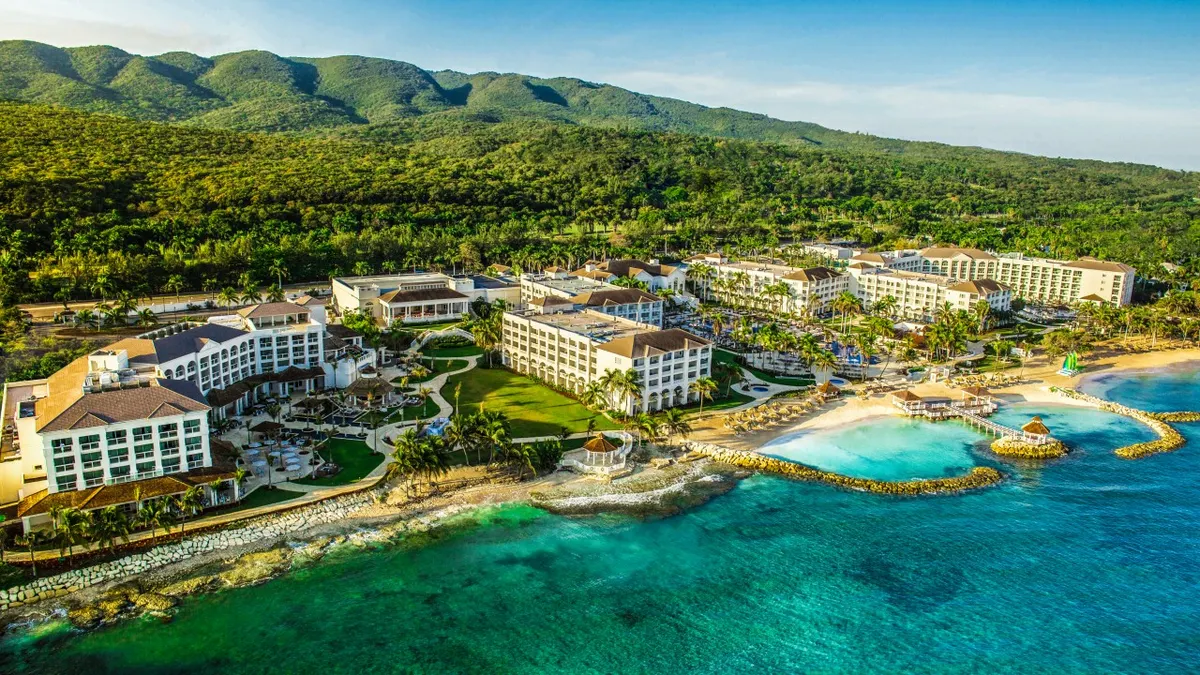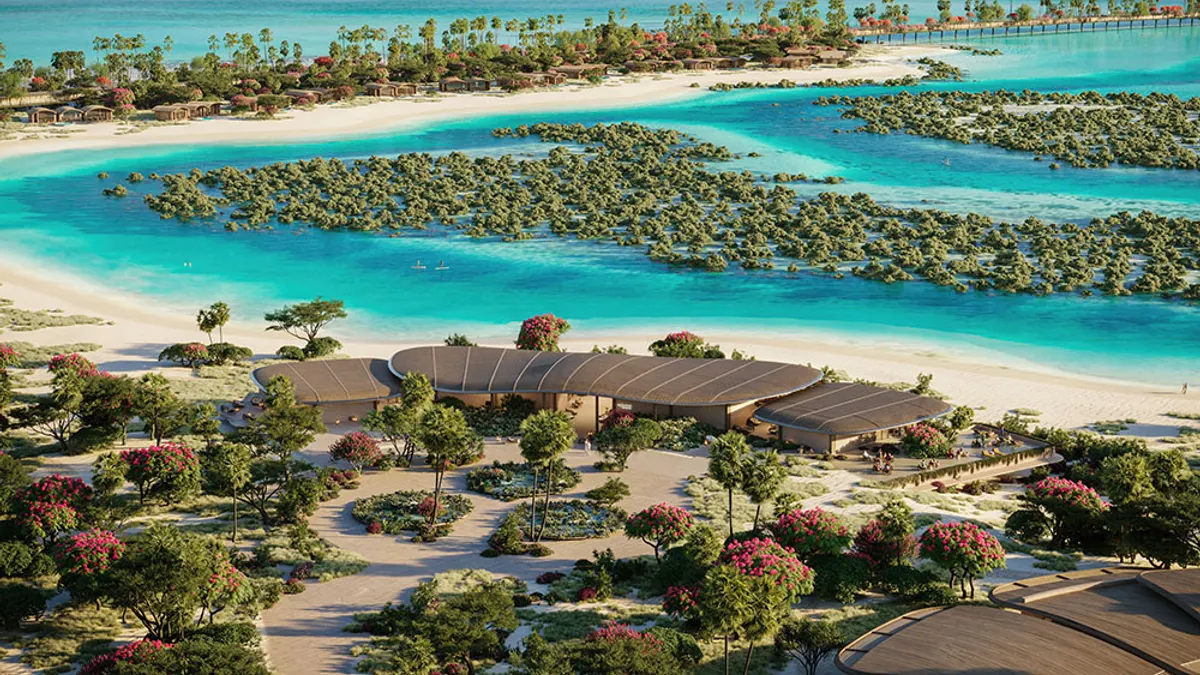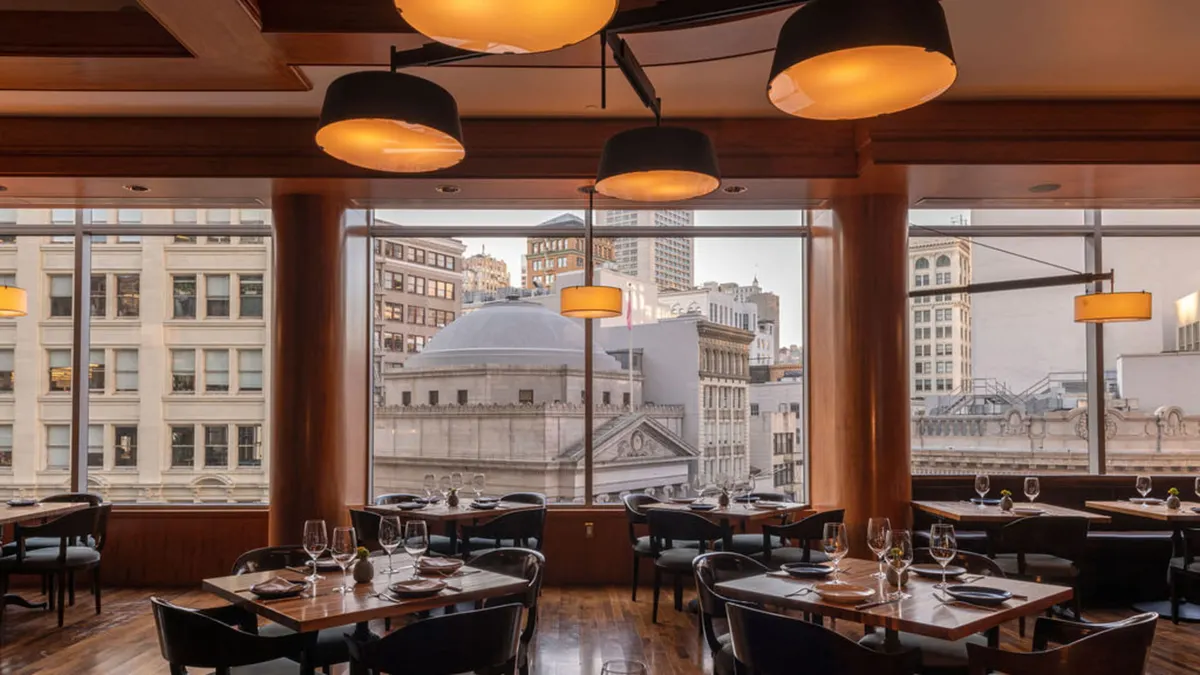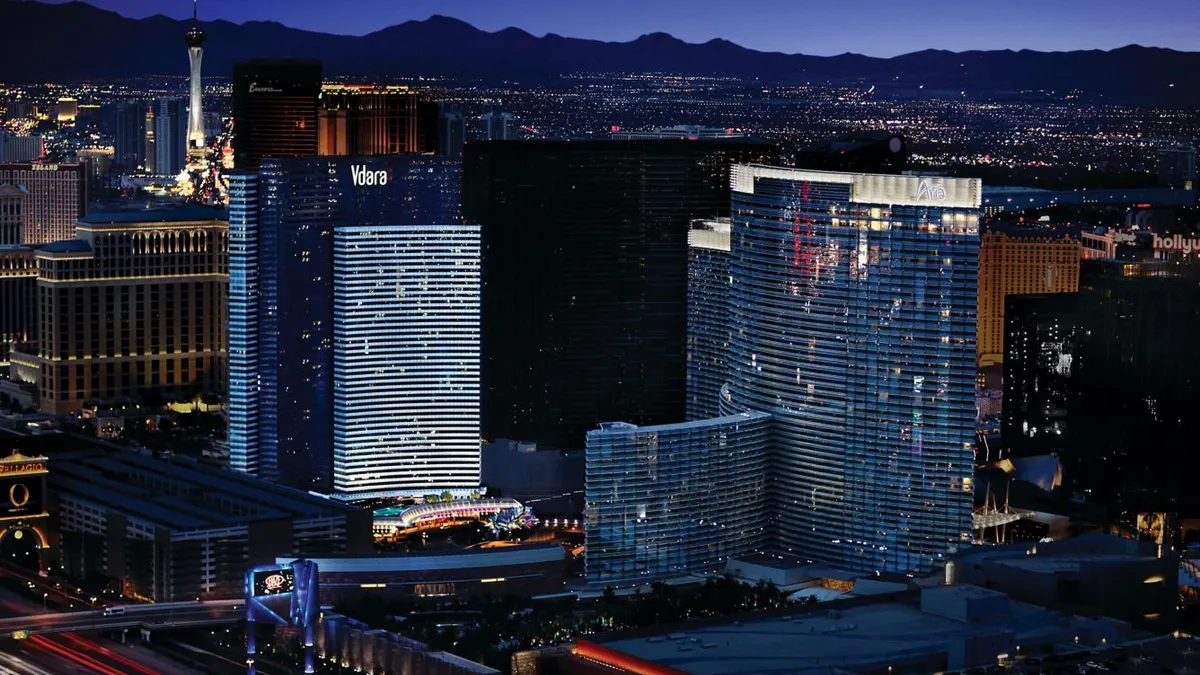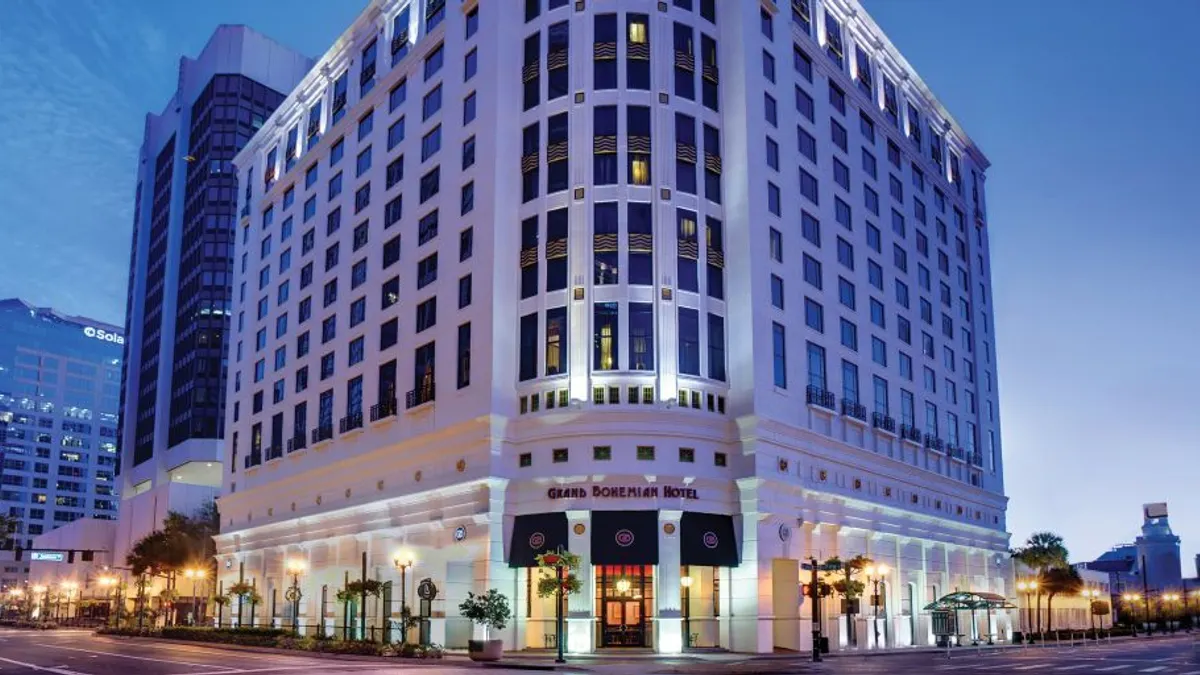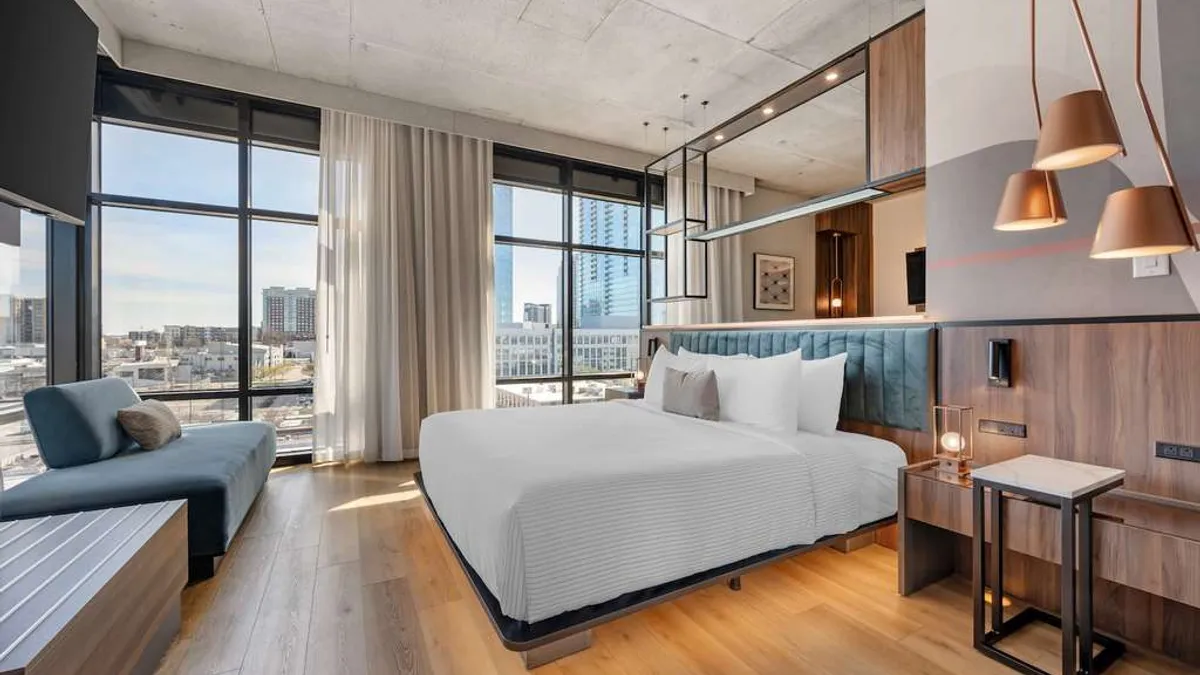Adaptive reuse — the process of rehabilitating an existing building for a new purpose — is not exclusive to the hotel industry, but more hospitality brands and builders are seeking it out for its cost-savings, sustainability and design appeal.
To create a hotel using this method, developers will typically convert underutilized office space or historic buildings with outdated uses — think older banks, warehouses or even jails.
Many of these adaptive reuse projects crop up in major urban areas, with hotels being a viable option to preserve existing buildings’ historic character while revitalizing neighborhoods or downtown spaces that aren’t reaching their full potential.
Hotel Dive spoke with industry experts about what adaptive reuse projects look like in hospitality today, the opportunities they present and how hotel players can navigate the challenges of redevelopment.
Seizing on an ‘urban trend’
In the hotel industry, the most prominent reuse cases are low-occupancy office buildings and historic structures in urban centers, according to multiple experts.
Adaptive reuse in the hotel sector is “first and foremost an urban trend,” JLL Hotels & Hospitality Group Americas President Dan Peek told Hotel Dive, noting that these projects more often than not fall into upper-tier segments.
Jack Paruta, hospitality leader for architecture firm Gensler, told Hotel Dive that cities “have a fair amount of building stock that is either becoming outdated or outliving its use, and developers are seeing opportunities to turn those into hotels.”
According to Peek and Paruta, adaptive reuse can often be a more affordable option than new construction, particularly in urban markets.
The average ground-up hotel development cost per key for an urban full-service hotel climbed to $742,000 in 2023, up 32% from 2019, JLL reported last year. A 260-key hotel, for example, would total roughly $192 million to develop.
On the flip side, to convert a typical vacant office building, it costs between $250 and $650 per square foot, according to CBRE data. Assuming a 200,000-square-foot office building yields 260 hotel rooms, the cost to convert that office to a hotel would total roughly $130 million on the high end of the cost range.
Andrew Hartley, a director for CBRE Hotels Valuation and Advisory team, told Hotel Dive that “relatively high interest rates and the inflationary cost of construction” following the COVID-19 pandemic have made converting an existing building into a hotel more desirable than building one from the ground up.
A high-cost construction environment is “the genesis of why a lot of hotel developers are looking at adaptive reuse as an option, because the development space is very challenging,” he added.
Optimizing ‘distressed’ spaces
Meanwhile, an increase in remote work is leading to office vacancy nationwide, Hartley noted.
Following an early pandemic exodus from in-person work, office occupancy has not recovered. According to CBRE data, U.S. office vacancy stood at 19.8% at the end of 2024, up from 12.4% in the first quarter of 2019.
Additionally, many large cities across the country have seen a “permanent erosion of corporate travel,” Hartley said.
Office buildings with low and declining occupancy that are considered “distressed” are often the target of hotel conversions, Paruta explained. In many central business districts, older and smaller office buildings have been hit the hardest by occupancy dips, per a June Gensler report.
While hotels are helping fill office vacancies, not all adaptive reuse projects include the full transformation of an existing building, the experts shared. In some cases, a hotel may occupy several floors of an office building that maintains partial occupancy, or a hotel may complement a residential use.
Aspen Hospitality and New York-based real estate developer Tishman Speyer, for example, are working to convert 10 floors of vacant office space above the NBC “Today” show studios at Rockefeller Center in New York City into a 130-room luxury hotel.
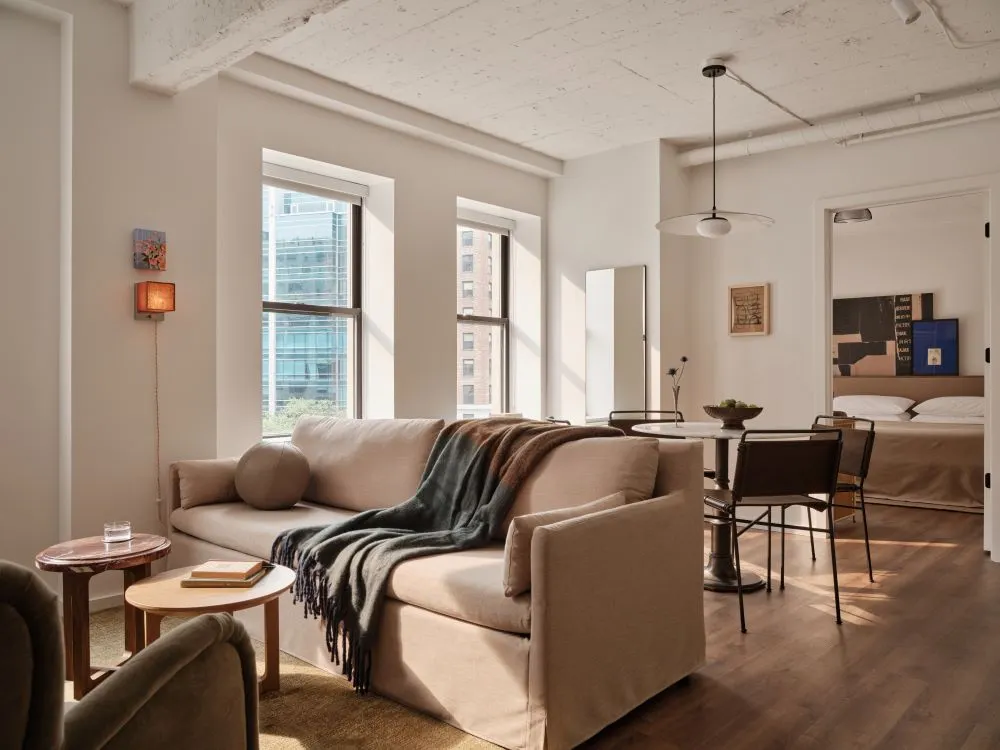
Meanwhile, residential hospitality operator Mint House converted a former 11-story office building in Washington, D.C., into the boutique apartment-style hotel 1010 Vermont. And other apartment-style hotel operators have opened hotels within multifamily buildings.
‘Preserving what already exists’
Preserving existing building supply is also a sustainable practice.
Through adaptive reuse, developers can minimize the carbon associated with building properties, including material extraction, manufacturing, transportation and construction, according to Paruta. Adaptive reuse can be used as a strategy to “significantly reduce demolition, carbon emissions, waste, and preserve what already exists,” he wrote in a 2023 report.
“By transforming outdated buildings into viable new uses, we can convert properties that were once detractors into thriving contributors that align with the desired user experiences of today’s age,” Paruta wrote. “Adaptive reuse is an important strategy to preserve the past and bring back to life important pieces of the fabric of our cities and anchors of their neighborhoods.”
Hotel Marcel near downtown New Haven, Connecticut, is one adaptive reuse hotel project that has taken sustainability to a whole new level.
Owner Bruce Becker transformed the 50-year-old office building into the first Passive House-certified hotel in the U.S. Not only did Becker preserve the “embodied carbon” of the existing building’s concrete, steel and other materials, he also claims to have created the country’s first zero-emissions hotel.
Telling a story ‘deeply rooted in place’
Historic buildings that have outlived their previous uses are particularly desirable for hotel conversion because they present the unique opportunity to tell a story and immerse a guest into a destination, experts shared.
“The largest trend in hospitality is that people want authentic spaces.”

Lori Mukoyama
Global hospitality leader and design director at Gensler
What’s more, converting an underutilized historic building into a hotel can help drive new business as today’s travelers seek more unique and immersive accommodations.
According to Lori Mukoyama, global hospitality leader and design director at Gensler, adaptive reuse can create more value for guests because historic buildings often allow for the creation of unique rooms and layouts.
With historic reuse, a developer can often “get a larger room than [they] typically would with new construction,” because of the original building’s unique floor plate, Mukoyama told Hotel Dive. With larger guest rooms, hotels can offer “something really unique” — like a five-fixture bathroom, for example — because they have additional space, she noted.
Historic reuse projects also showcase unique building features like tall ceilings, double-hung windows or exposed brick walls, all of which add value, the Gensler pros shared.
With this built-in character, a “four-star boutique hotel in an adaptive reused historic building is going to have a better rate than, say, a new-build Marriott or Hilton hotel,” according to Paruta, because it provides a “higher level of authenticity of design.”
Hotel developers can go one step further by incorporating the building’s historic use into its theme or guest offerings, according to Mukoyama.
“The largest trend in hospitality is that people want authentic spaces,” Mukoyama said. “If I'm going to Los Angeles versus New York or Chicago, I want to feel like I’m in that place, [and there’s] no better way to do that than to tell a very authentic, historic story deeply rooted in place.”
Gensler did this with Watermark Baton Rouge, when the firm helped convert a former skyscraper in Baton Rouge, Louisiana, into a boutique hotel under Marriott’s Autograph Collection, Mukoyama shared.
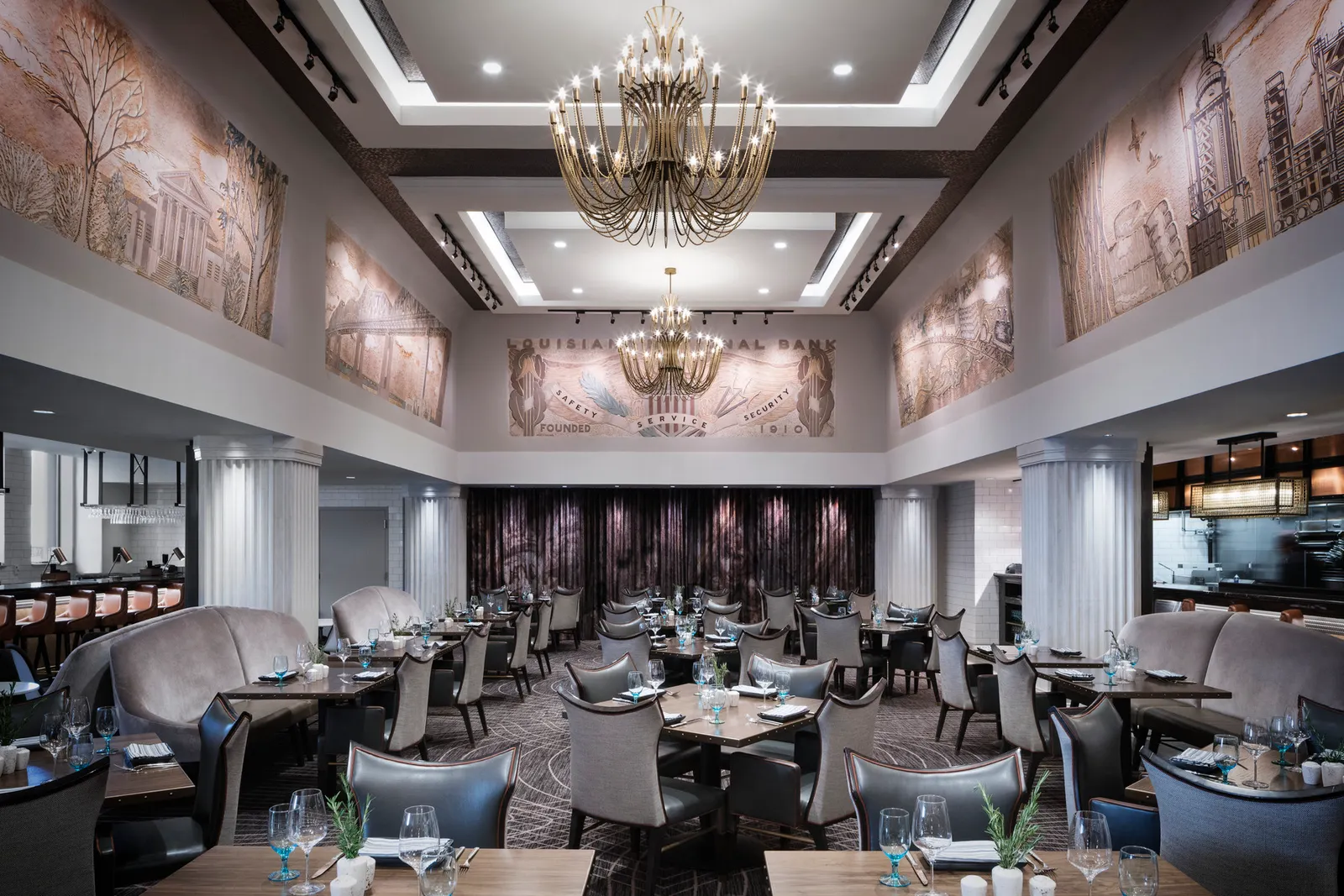
To maintain the building’s history — formerly the Louisiana National Bank in 1925 and then the State Office Building in the 1960s — the hotel’s design incorporates several original elements, including eight bas-relief murals, a sculpted marble entry staircase and eight Greek Revival fluted columns, into the contemporary design, according to the firm.
“Instead of having to pretend or create art that felt authentic, we used the actual artwork from the [original] bank lobby, which created a draw but also a sense of authenticity and community that you can’t purchase or replicate,” Mukoyama said about the project.
Combatting ‘unforeseen contingencies and costs’
While adaptive reuse projects have the potential to drive value for hotels, they also present challenges.
It can often be difficult to reconfigure a building’s floor plate to fit a hotel use, Paruta said, noting that it can be “like a puzzle to put together room layouts that work with existing column grids or building cores.”
CBRE’s Hartley echoed a similar sentiment, joking that “offices just weren't designed to have a bathroom every 200 square feet.”
There is “also a whole staff procession that you have to consider,” Mukoyama said, noting that hotel workers often use back-of-house entryways or different elevators than guests to move around a property. When changing the use of an existing building, these hotel-specific elements can be a challenge to create, she said.
Hotel reuse projects must also consider loading docks — necessary for workers servicing a hotel — and space at the front entrance for guests to pull up and unload their luggage or for valet, per Mukoyama.
Tough reconfigurations can be costly — as can maintaining modern building standards, Hartley noted.
“Historical adaptive reuse [has] almost always [been] much more costly than ground-up development, mainly because you have to maintain certain standards. So, there’s a lot of unforeseen contingencies and costs that you have to adapt for,” he said.
To mitigate costs, hotel players should consider the tax credits they qualify for when starting a reuse project, experts shared.
Historic buildings can be eligible for federal and, sometimes, state historic tax credits, Paruta explained, “which can represent millions of dollars depending on the overall budget for the project.” Approval through the State Historic Preservation Office and the National Park Service, though, is contingent on property-specific details and requires “a rigorous process,” Paruta said.
However, gaining approval for historic tax credits is “worth developers’ time, effort and money because they pay off,” Paruta said, adding that “tax credit incentives are part of what makes [reuse] projects pencil out.”
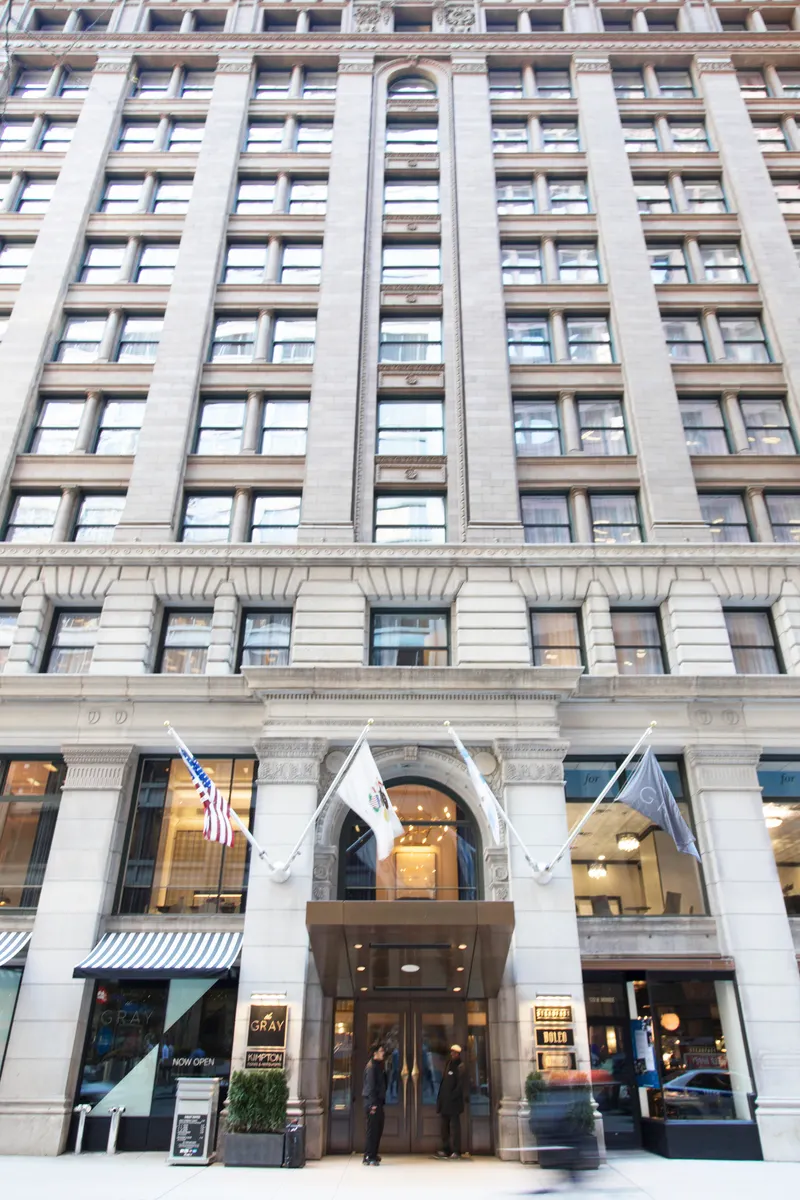
The Kimpton Gray Hotel in Chicago, for example, is a historic landmark that Gensler helped convert into a four-star, 293-key boutique hotel. The project required “intense exterior restoration, structural reconfiguration and interior repairs,” according to the firm’s website. Gensler had to preserve the existing structure to accommodate the stringent requirements of the local landmark commission. But, in the end, the preservation efforts for the project earned Gensler’s client nearly $10 million in historic tax credits.
Hartley explained that even though adaptive reuse hotel projects can be pricey, “there’s a lot of intangible value to potential strategies of historic restoration” for developers. Namely, it will ensure future opportunities, he noted.
If a hotel developer is successful in completing a historic restoration project — which is “exponentially harder” to do compared to ground-up development, per Hartley — the opportunity for them to do another reuse project increases. Municipalities are more likely to provide further monetary incentives, and banks more friendly with lending, to hotel developers that have proven themselves.
As travelers increasingly seek unique accommodations and building supply continues to age, hotel players are sure to find more opportunities to undertake adaptive reuse projects and grow their portfolios.



